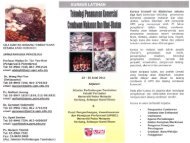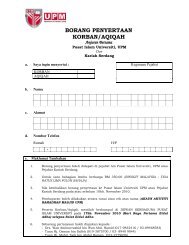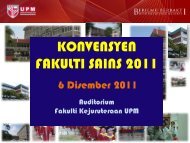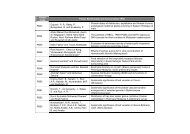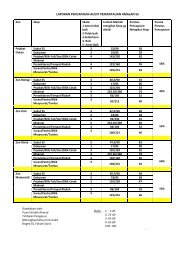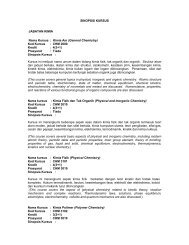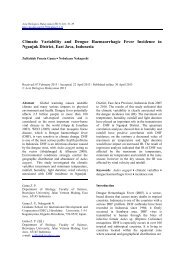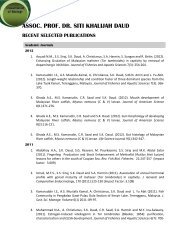Programme Book - UPM - Universiti Putra Malaysia
Programme Book - UPM - Universiti Putra Malaysia
Programme Book - UPM - Universiti Putra Malaysia
Create successful ePaper yourself
Turn your PDF publications into a flip-book with our unique Google optimized e-Paper software.
P42 PREPARATION, CHARACTERISATION ANDPHOTOCATALYTIC ACTIVITY OF Ag/ZnO and Cu/ZnOPHOTOCATALYSTM.A. Zaid., M. Goh, A.H. Abdullah*Department of Chemistry, Faculty of Science, <strong>Universiti</strong> <strong>Putra</strong> <strong>Malaysia</strong>, 43400 <strong>UPM</strong>Serdang, Selangor, <strong>Malaysia</strong>Corresponding author: halim@science.upm.edu.mySemiconductor photocatalyst often leads to partial or complete mineralization oforganic pollutants. Upon irradiation with UV light, semiconductor catalyse redoxreaction in presence of air and water. However the use of semiconductor photocatalystonly such as ZnO and TiO2 is limited because of the recombination of the generatedphoto-holes and photo-electron. One way to approach it is by doping it with anothermetal inside the catalyst. Here, the potential of a common semiconductor, ZnO dopedwith the silver or copper as a photocatalyst, has been explored as an effective catalystfor the photocatalytic degradation of an organic pollutant: 4-chlorophenol (4-cP) inaqueous solution. The results will be different between the two dopings but thepurposes are same which is to ensure the efficiency of the catalyst are increasedtoward the degradation. An 8 watt lamp is used as the source of the UV-radiation in abatch reactor. The effects of operational parameters such as the amount ofphotocatalyst is been examined while substrate concentration is being constant in theexperiment. Spectroscopic method (UV-vis spectrophotometer) was used todetermine the 4-cP concentration after the degradation. The mass loading that givesthe best degradation in 90 minutes is sent for other characterizations such as X-raydiffraction (XRD), band gap, FESEM and BET together with nearest mass loading ofcatalyst that give the best degradation.57 |16 th Industrial Chemistry Seminar: Chemistry- A Passport to a Brighter Future




